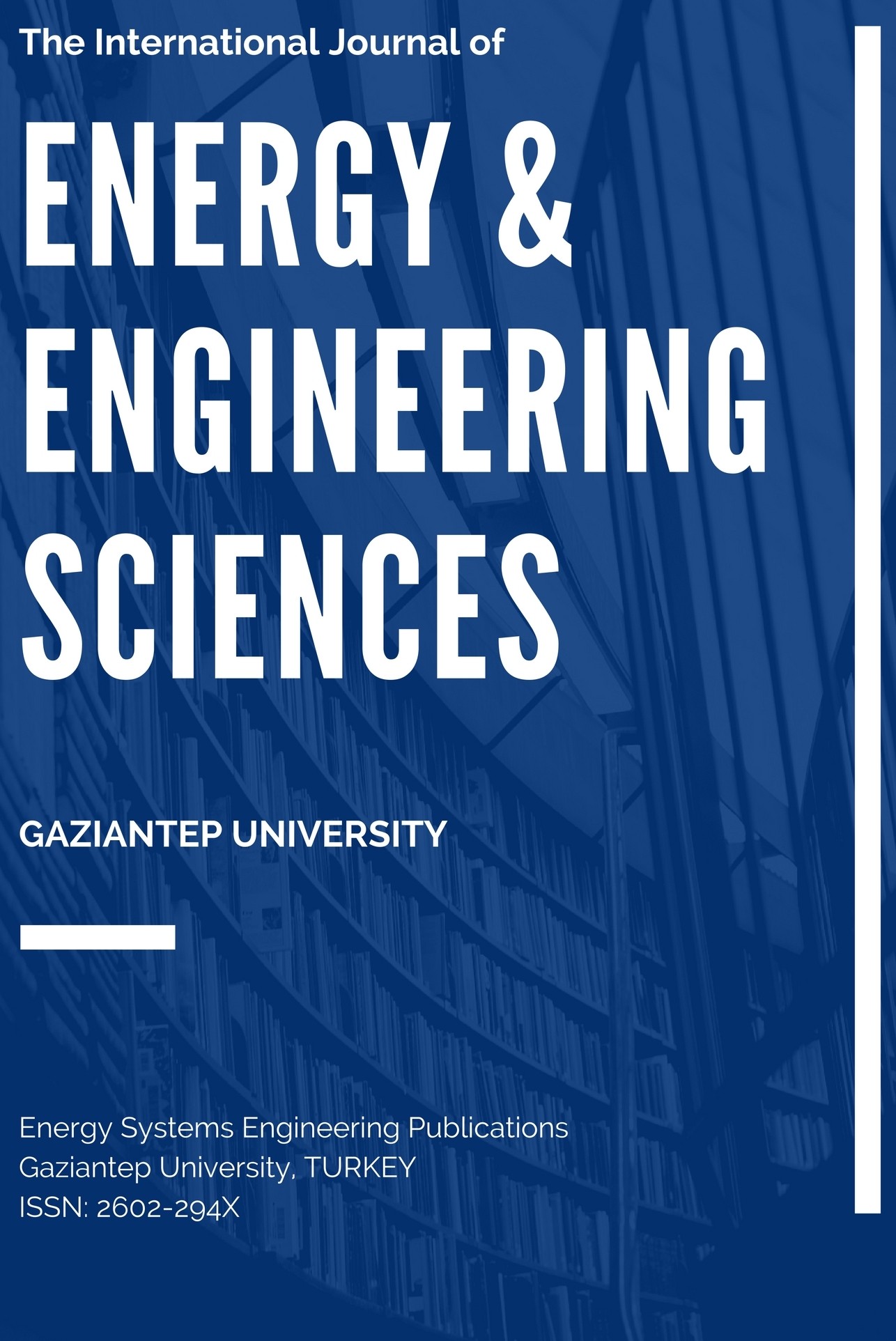PITTING CORROSION BEHAVIOUR OF ST 37 STRUCTURAL STEEL IN SEVERAL CORROSIVE ENVIRONMENTS
PITTING CORROSION BEHAVIOUR OF ST 37 STRUCTURAL STEEL IN SEVERAL CORROSIVE ENVIRONMENTS
Construction, Steel, Salinity, Pitting Corrosion,
___
- [1] “ASTM G15-99b: Standard Terminology Relating to Corrosion and CorrosionTesting”, 1999, ASTM, Philadelphia.
- [2] Frankel, G. S. (1998). Pitting Corrosion of Metals. Corrosion, 145(6), 2186–2198.
- [3] Oktem, M. F. (2005). Pit Morphology and Effect of Prior Pitting Corrosion on Fatigue, (May).
- [4] Mohamed, N., Boulfiza, M., & Evitts, R. (2013). Corrosion of carbon steel and corrosion-resistant rebars in concrete structures under chloride ion attack. Journal of Materials Engineering and Performance, 22(3), 787–795.
- [5] Zhao, Y., & Jin, W. (2016). Damage Analysis and Cracking Model of Reinforced Concrete Structures with Rebar Corrosion. Steel Corrosion-Induced Concrete Cracking, 55–77.
- [6] Shi, X., Xie, N., Fortune, K., & Gong, J. (2012). Durability of steel reinforced concrete in chloride environments: An overview. Construction and Building Materials, 30, 125–138.
- [7] Ann, K. Y., & Song, H. W. (2007). Chloride threshold level for corrosion of steel in concrete. Corrosion Science, 49(11), 4113–4133.
- [8] Thomas, M. (1996). Chloride thresholds in marine concrete. Cement and Concrete Research, 26(4), 513–519.
- [9] Ma, F. (2012). Corrosive Effects of Chlorides on Metals. Pitting Corrosion, 139– 178.
- [10] Kolotyrkin, J. (1963). Pitting corrosion of metals. Corrosion. Retrieved from http://www.corrosionjournal.org/doi/pdf/10.5006/0010-9312-19.8.261
- .[11] Frantziskonis, G. N., Simon, L. B., Woo, J., & Matikas, T. E. (2000). Multiscale characterization of pitting corrosion and application to an aluminum alloy. European Journal of Mechanics, A/Solids, 19(2), 309–318.
- [12] Angst, U., Elsener, B., Larsen, C. K., & Vennesland, Ø. (2009). Critical chloride content in reinforced concrete - A review. Cement and Concrete Research, 39(12), 1122–1138.
- [13] Glass, G. K., & Buenfeld, N. R. (1997). The presentation of the chloride threshold level for corrosion of steel in concrete. Corrosion Science, 39(5), 1001–1013.
- [14] Page, C. L., & Havdahl, J. (1985). Electrochemical monitoring of corrosion of steel in microsilica cement pastes. Materials and Structures, 18(1), 41–47.
- [15] Souza, J. B. de, & Deus, E. P. de. (2014). Damage Mechanics Applied for Steel Reinforcements in Concrete Structures under Corrosion. Procedia Materials Science, 3, 2000–2005.
- [16] Nakai, T., Matsushita, H., & Yamamoto, N. (2004). Effect of pitting corrosion on local strength of hold frames of bulk carriers (2nd Report) - Lateral-distortional buckling and local face buckling. Marine Structures, 17(8), 612–641.
- ISSN: 2602-294X
- Yayın Aralığı: Yılda 2 Sayı
- Başlangıç: 2016
- Yayıncı: Gaziantep Üniversitesi
Erhan KARA, Çetin KARATAŞ, Sevinç Zafer MUTLU
SIMULATION OF FLOW WITHIN THE DIFFERENT CAVITIES USING SST K-Ω TURBULENCE MODEL
Nehir TOKGOZ, Rahim HASSANZADEH, Besir SAHİN
OPTIMIZATION OF SPACING BETWEEN STAGGERED METAL HYDRIDE TANKS INTEGRATED FUEL CELL SYSTEM
İsmail HİLALİ, Refet KARADAĞ, Hüsamettin BULUT
NUMERICAL STUDY OF FLOW STRUCTURES WITHIN DIFFERENT CAVITIES USING LARGE EDDY SIMULATION
Rahim HASSANZADEH, Nehir TOKGOZ, Besir SAHİN
GRAIN DIFFUSION AND DISPERSION OF CLAYEY SOILS IN A CONSOLIDATION PHENOMENON
Barış MAHMUTLUOĞLU, Mehmet Arslan TEKİNSOY, Baki BAĞRIAÇIK
PITTING CORROSION BEHAVIOUR OF ST 37 STRUCTURAL STEEL IN SEVERAL CORROSIVE ENVIRONMENTS
Taha Yasin EKEN, Kafiye KARDELEN, Nuray CELEBI, Mehmet Fatih OKTEM
PWM CONTROLLED DC-DC BOOST CONVERTER DESIGN AND IMPLEMENTATION
